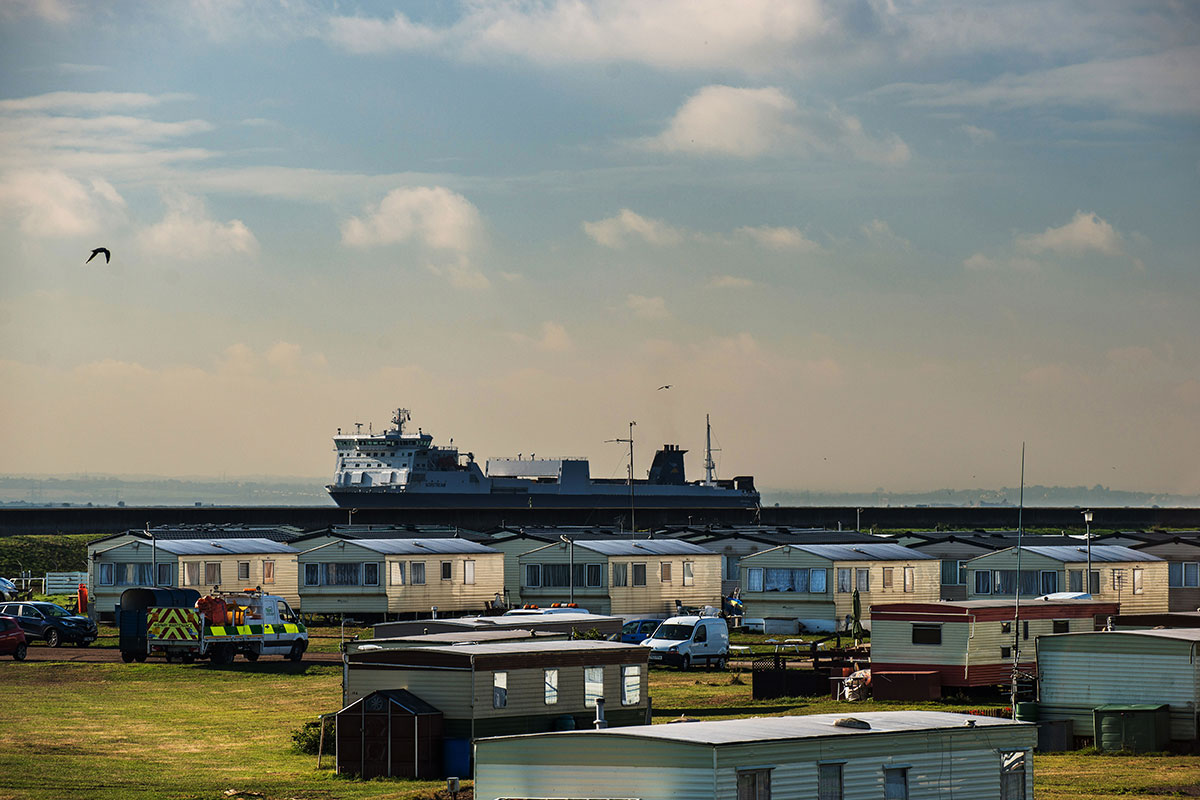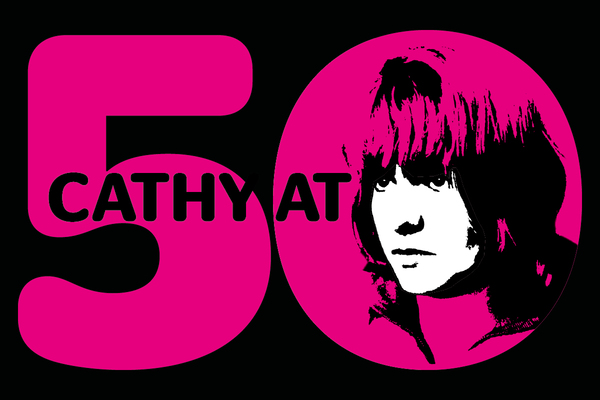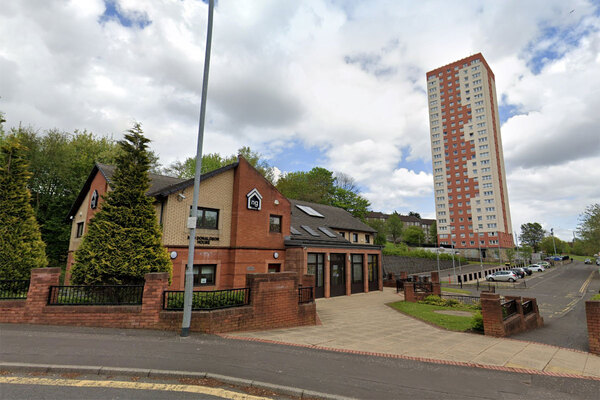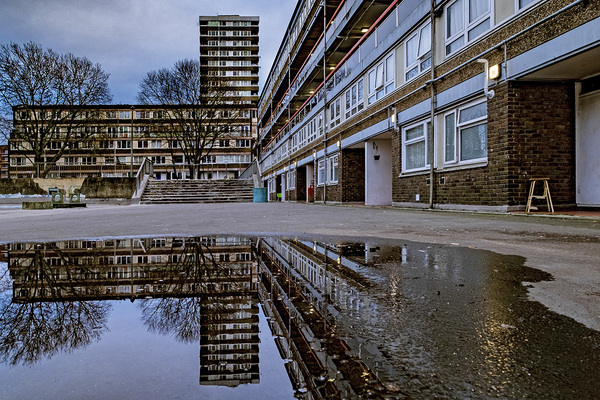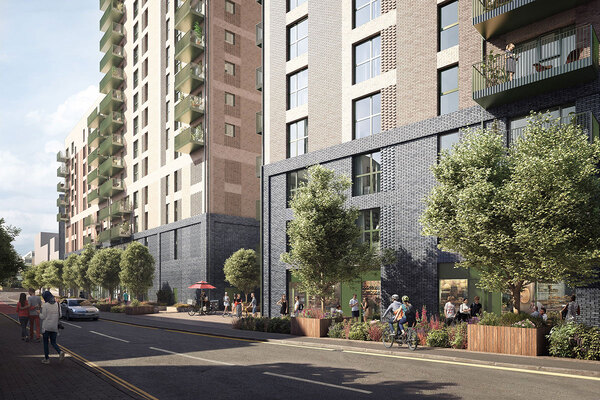You are viewing 1 of your 1 free articles
Caravan life
An Inside Housing investigation has found that thousands of people on low incomes are choosing to live in caravans and mobile homes. Martin Hilditch uncovers a hidden world that raises questions about the housing benefit system. Photography by Simon Brandon

Leanne McGowan lives with her daughter and two sons in a three-bedroom caravan in Canvey Island. It’s a squeeze. Her three-year-old son and seven-year-old daughter share, while Ms McGowan and her fourteen-year-old son sleep in the remaining rooms.
The kids are at school now, but their scattered playthings mean their presence is still felt – a toy gun and motorbike lie on the floor and four Teletubbies are lined up like ornaments on a shelf in one corner of the room.
Ms McGowan occupies one of hundreds of static caravans that are sandwiched between a small, sandy beach and the looming terminals of a Calor Gas plant. She’s lived on the site for two years and housing benefit covers most, but not all, of the rent. She has to pay £18 a week top-up to cover the remainder. “It ain’t easy,” she says.
She ended up on the site after the landlord of the nearby private rented home she previously lived in sold the house.
“I didn’t have a choice when I moved here,” she says, adding that she thought the move would “just be short term”. But trying to get into another house that is affordable on housing benefit has proved impossible. “I phoned up all the [lettings] agents,” she says. “They never have anything at all.”
She’s lived in the caravan ever since. “It is cramped,” she admits, saying ultimately: “I don’t think it is suitable for families to be in here.”
Sitting between two electric heaters, Ms McGowan admits that the caravan gets “ever so cold” in the winter – and keeping it warm is an expensive business. She has spent £4 on heating in less than 24 hours. In the winter months the family sometimes keep warm by effectively living in the lounge. “We get the mattresses in here,” she says. “We sleep here sometimes, yes. I don’t mind being cold, but it’s the kids. It is like we are camping out in the front room.”
The site itself is “not a bad place to be”, says Ms McGowan, who is on a waiting list for a council home. She adds that it’s well-maintained and there’s a friendly atmosphere. “There are some nice people here and they look after each other,” she says. “It’s nice in that respect. We are all in the same situation.”
She’s not wrong there. In fact, there are currently 268 housing benefit claims registered to addresses on the site. Research carried out by Inside Housing this year has revealed Canvey Island’s Thorney Bay Village has more housing benefit claims registered to it than any other caravan or mobile home site in the UK. Last year, £1.9m of housing benefit was paid to addresses here. Our investigation reveals that the residents of Thorney Bay Village are far from unique. In fact, we found that there are thousands of people on low incomes currently living in caravan and mobile home parks across the UK. Responses received between May and August this year reveal the 271 councils that provided information to Inside Housing made more than 12,000 housing benefit payments to addresses on caravan and mobile home parks in the UK – with 11,162 of these being made in England (an average of 47 claims per authority. See box: Caravan counts).
The payments, obviously, do not reveal people’s motivations for making these choices – and clearly there will be variations in quality between permanent mobile homes and holiday caravans that people are occupying (see box: Caravan counts).
Nonetheless it does reveal a significant number of people living in non-traditional housing that the majority of councils know next to nothing about. Almost everyone Inside Housing spoke to at Thorney Bay Village cited affordability as one of their central reasons for ending up on the site.
The research certainly raises some serious questions, according to Matt Downie, director of policy and external affairs at homelessness charity Crisis.
“This investigation has revealed millions of pounds of benefits being spent on keeping people in completely substandard living conditions,” he says. “This sorry state of affairs is a direct result of cuts to housing benefit combined with the failure of a succession of governments to build enough decent, affordable homes.”
Certainly, the availability of housing benefit is driving decision-making for a number of residents living in Thorney Bay Village – and housing benefit did not even cover the full rental cost of a caravan for any of the occupants Inside Housing met. Rents ranged from £145 to £175 a week, based on the people we spoke to. One woman, who lives in a van with her young children, said she was topping up her housing benefit to cover the rent. She picked the site because “it was this or a hostel”, she adds.
Helen Davies and Dave Simmonds live in a three-bed caravan with Ms Davies’ two children
Other residents are more enthusiastic. Dave Simmonds and Helen Davies live in a three-bed caravan with Ms Davies’ two children. Helen has lived there for more than four years since moving from her native Wales (and a Welsh flag hangs proudly outside the couple’s home). Their front room is the picture of domestic life, with paintings by the kids decorating the wall and
photos of the children dotted around the place.
“I love it here,” Ms Davies says. “The camp is very clean all the time.” The couple’s van is spotlessly tidy, but Ms Davies admits that the festive season is more complicated when you live in a caravan. “At Christmas time you have to think about what [presents] you’re getting because you have to find somewhere to put them,” she says with a laugh. Ms Davies pays £18 a week top-up to cover her rent, and says she has fallen slightly into arrears as a result. A similar story is told by a couple of other residents.
Clearly the fact that housing benefit can’t even cover the cost of a static caravan – when people on low incomes are choosing to live there because they are seen as the most affordable option locally – raises its own questions. Like Mr Downie, a spokesperson for Castle Point Council points a finger at the housing benefit system. The council is currently making 468 housing benefit payments to addresses on caravan and mobile home sites – more than any other local authority in the UK.
Thorney Bay’s caravanners’ struggles to cover the rent from housing benefit “is not unique to Thorney Bay”, the spokesperson suggests. “This is the story behind the majority of housing benefit cases within the private sector, where housing benefit is based on Local Housing Allowance rent levels, which do not reflect the increase year-on-year of the private rental market.”
Other councils have been investigating their caravan and mobile home populations too in recent years. In 2014, Folkestone Council found “emerging evidence from around the district that some residents are occupying holiday-let caravans as their main or sole home”. It found 45 occupants in receipt of housing benefit from holiday-let caravans. Denbighshire Council estimated that “175 individuals in the county were living all year round in ‘holiday’ caravans”.
Some sites are marketing caravans specifically as a solution for people on low incomes. A post earlier this year on spareroom.co.uk advertised caravans in Greetham, Rutland for £90, stating that “DSS is welcome” and people could move into “not just a room – a full caravan to yourself at room rates”. And Falcon Mobile Homes makes an explicit pitch on Facebook to people on low incomes, asking: “Are you receiving housing benefit? If so you can rent one of our static caravans.”
Posts on property websites provide a snapshot into the lives of some people looking for or living in caravans. One 47-year-old man posting on Gumtree says he and his dog “desperately need a home as we have become homeless” and is looking for a flat, a house or a caravan. Other people are looking to move out of vans. One woman posts on behalf of her mother saying she is “currently sofa-surfing from my house to a crabby broken caravan” and is “in desperate need of a home so she can have my brother live with her again”.
A spokesperson for the Department for Work and Pensions says it has “no evidence that use of this type of accommodation is increasing or that there is any link to welfare reform”.
Caravan counts
Some of the claimants recorded in the figures will be Gypsies and Travellers, but by comparing our figures with annual caravan counts in England, we know that almost 1,751 payments are being made in council areas with five or fewer recorded Gypsy or Traveller vans – an average of 30 payments per council. At that average per authority, more than 7,300 claims would be made by non-Gypsies and Travellers.
While many councils appear to have little idea about the extent to which people are living permanently in caravans and mobile homes in their areas, some local authorities have carried out specific pieces of research – presenting them with an unanticipated windfall.
East Lindsey Council, for example, launched a review at the end of 2014 into the occupation of caravan/chalet sites and said residents had raised concerns about “breaches of occupancy at caravan sites”.
The results of East Lindsey’s research took it by surprise. It uncovered 502 residents living in mobile homes or caravans. In turn, the council effectively suggests the work has brought 502 ‘new’ homes into use. This has led it to claim New Homes Bonus – the grant paid by the government to councils to reflect and incentivise housing growth in their areas.
Since the review was started it has successfully claimed £605,000 of New Homes Bonus for these properties, according to a council spokesperson. It’s not alone; a company called Mobile Homes Review claimed it has generated £4.2m in additional New Homes Bonus funding in 2014 by registering 700 mobile homes in seven local authority areas.
Ros Pritchard, director general of the British Holiday & Home Parks Association, stresses that more research is needed to find out if claims were being made from high-quality residential parks (that look like “lovely bungalows”) or holiday accommodation. “Residential parks are an enormous form of low-cost market housing,” she adds.
Nevertheless, the scale of housing benefit payments uncovered by Inside Housing’s investigation suggests that more research should be carried out by councils and the government into the reasons people on low incomes are choosing to live in caravans and mobile homes – and the quality of the accommodation available to them.
Back at Thorney Bay Village, we meet Paul Birch and his husband Tom. They moved to the site after becoming homeless and had previously lived in a transit van for a month. The unpacked removal boxes in the corner of their room reveal the couple don’t see this as their permanent home. They have been on the site for the past year – and say winter is the worst time.
“The winter was hell,” Mr Birch states. “It is like a fridge.” His husband says they spent £35 a week on heating the van last winter. Both are looking forward to the future – as the removal boxes indicate.
“As soon as we move out, hopefully it will be onwards and upwards,” Mr Birch says.
